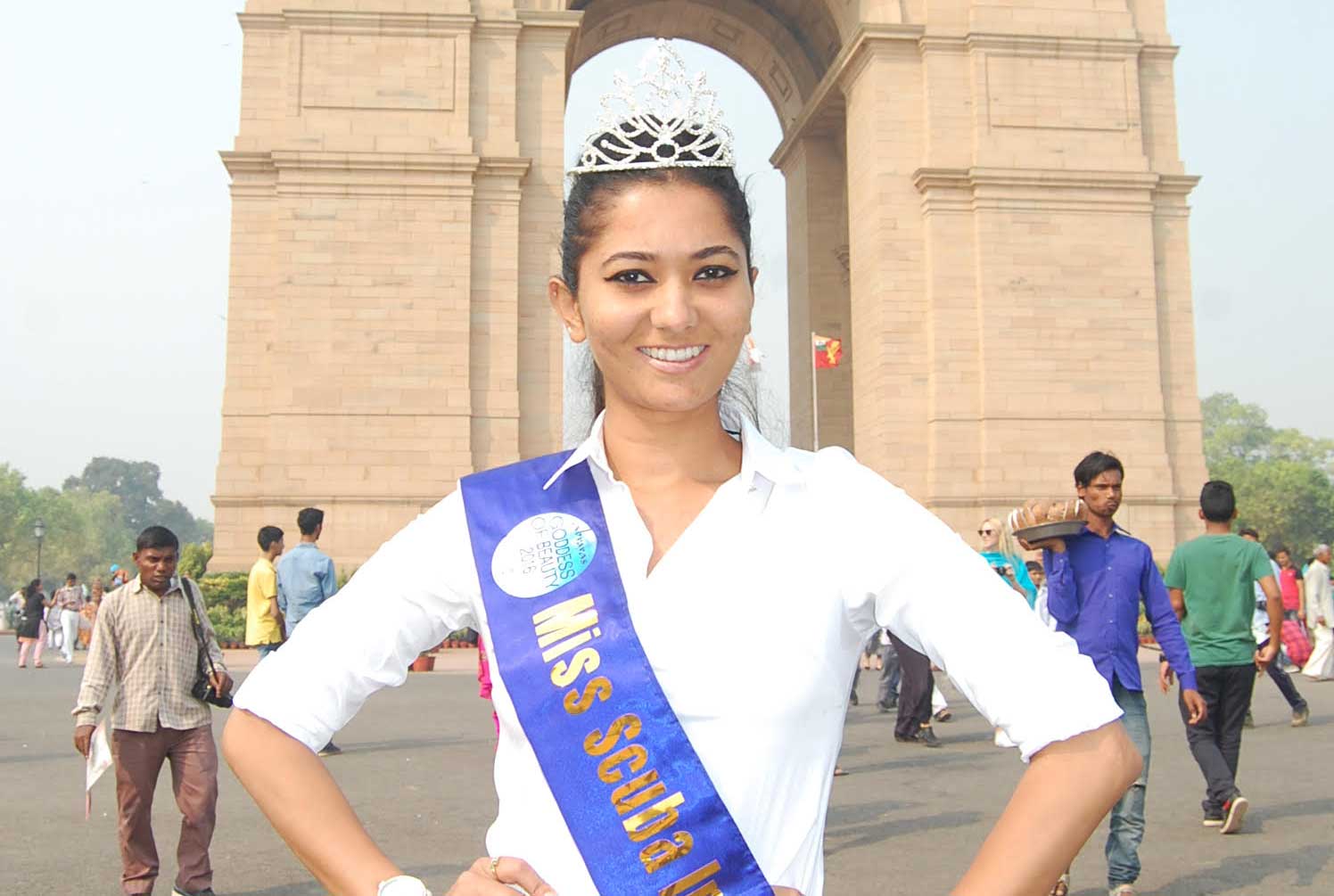Life
The New Beauty

Varsha Rajkhowa will represent India in the Scuba International Pageant to be held in Malaysia.
As pageants around the world have been associated with traditional ideals of race and beauty, choosing mixed origin pageant queens as representatives of a particular country or culture has often invited criticism in the conformist circles of beauty parades.
In December this year, 124 beauties from around the world will come together at the Gaylord National Resort & Convention Center in Maryland for the Miss World pageant. Amongst the pageant winners will be Priyanka Yoshikawa, the 22-year-old, Miss Japan, who is of half Indian, half Japanese lineage. Yoshikawa’s crowning comes just a year after another Miss Universe, Japan, contender Ariana Miyamoto, also of mixed racial background, was bestowed the title. She was half Japanese and half African American. Both title winners received backlash and also earned the moniker of Haafu, ridiculing their half Japanese lineage
As pageants around the world have been associated with traditional ideals of race and beauty, choosing mixed origin pageant queens as representatives of a particular country or culture has often invited criticism in the conformist circles of beauty parades. In 2014, when Indian American Nina Davuluri was crowned Miss USA, she was called everything from a terrorist to an Arab. The fact that a woman of Indian descent was chosen as Miss America did not go down well with those associating the ideal of an American beauty with white skin and blonde hair. Similarly, when Priya Gopal Walker won the Miss Washington Teen USA 2015, contest, she faced a strong blowback because of her “non-American” roots.
 Nina Duvului MissAmerica 2014
Nina Duvului MissAmerica 2014
Nevertheless, multiracial women are becoming increasingly visible on the global stage. In 2015, Pia Alonzo Wurtzbach, a Filipino German actress representing the Philippines won the Miss Universe title to considerable criticism. The consecutive crowning of two beauty queens with mixed backgrounds in Japan, which is a particularly homogenous country, shows however that multiracial beauties are gaining ground. The Miss Japan pageant director has pushed back against the criticism, arguing that while Priyanka looks different from other Japanese girls, the public chooses modern beauty standards.
Sociologists say the changing modern ideals of beauty are a sign of times. As developed countries in the world become home to large numbers of immigrants, cross-cultural assimilation is bound to happen. According to the American Community Survey, the U.S. immigrant population topped 42.4 million or 13.3 per cent of the entire U.S. population in 2014. In the year ending March 2016, migration to UK exceeded 327,000 according to the latest net migration statistics and in 2015, 271,660, new permanent residents landed in Canada. Japan’s Justice Ministry reported that the number of foreign residents in the country reached an all-time high last year, with 2.23 million long term and permanent foreign residents in the country.
Filmmaker Raj Kaushal who has closely studied cross-cultural influences, says: “Today in big cities such as New York, every fourth face you spot may be an immigrant, and often these people who may not look typically American are in reality as American as it gets. The reality is that we are now living in a very diverse world, where it is unfair to typify anyone based just on their looks.”
However, slotting of women in a set beauty standard has been commonplace for centuries. Varsha Rajkhowa, a model who hails from North East India and is gearing to participate in the Scuba International Pageant to be held in Malaysia, later in November this year, says: “It’s not just about mixed race contestants in international pageants. Often in India too, girls from North East are given biased treatments because they do not look ‘Indian’ enough.”
Rajkhowa acknowledges that things have changed considerably from when she started: “I was rejected at many auditions and when I was competing at the first pageant of my life, I was indirectly told that my looks do not fit into the ideals of Indian beauty.”
However with over a dozen beauty titles under her belt today, Rajkhowa proves that the times they are a changing.
 Priya Gopal Walker,Miss WashingtonTeen USA 2015.
Priya Gopal Walker,Miss WashingtonTeen USA 2015.
Beauty pageant trainer and personality developer Rita Gangwani, author of The Beauty Pageant’s Greenroom, says: “It is the most outdated notion to believe that a mixed heritage girl is in any way less representative of a country or culture. During out training programs we stress on values such as assimilation and understanding of various cultures. A girl who represents a varied background is a shining example of someone who can take forward the duties of working for the world, bestowed on Miss Universe or Miss World winners.”
In her 2002 book, Ain’t I No Beauty Queen, Maxine Craig talks about a generation of black women who shunned their straightening combs and took pride in their Afro identity. The book explores the standards of beauty in historical contexts and details the history of black beauty pageants, followed by their later attempts to integrate with national pageants. While her book traces this journey to the 1940s and 1960s, today in a world continually torn on issues of race and identity, interracial beauties are breaking yet another stereotype.
